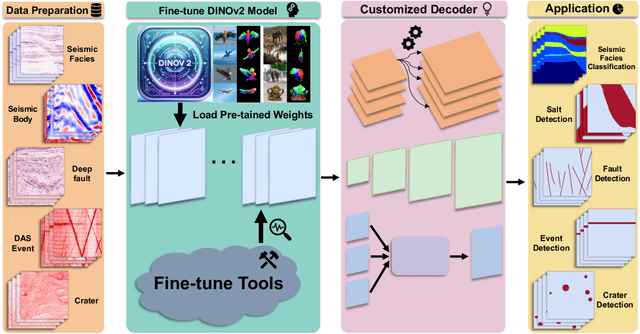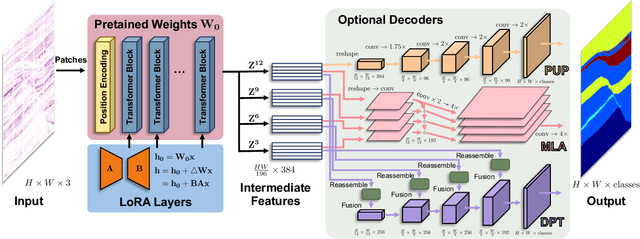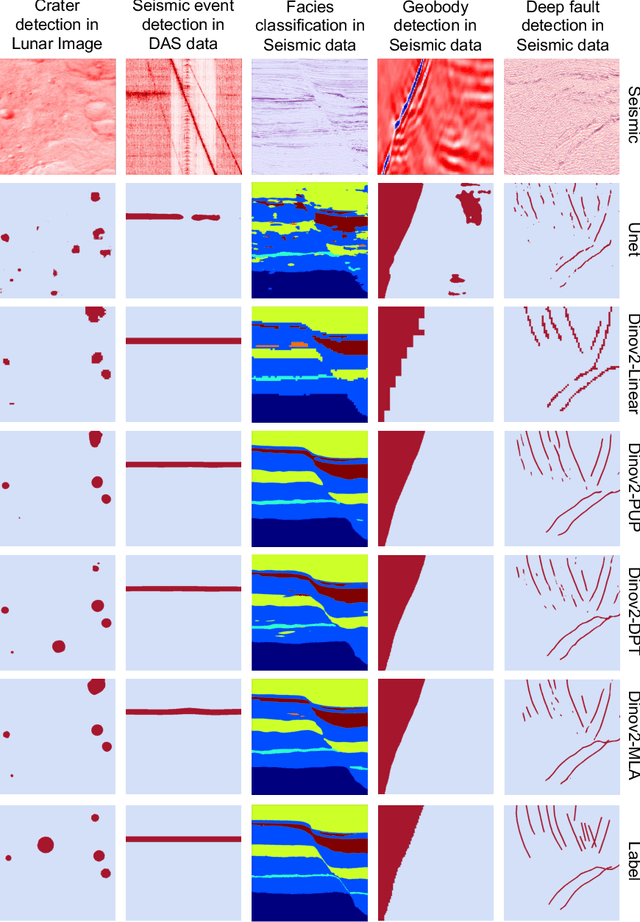Zhengfa Bi
Cross-Domain Foundation Model Adaptation: Pioneering Computer Vision Models for Geophysical Data Analysis
Aug 22, 2024



Abstract:We explore adapting foundation models (FMs) from the computer vision domain to geoscience. FMs, large neural networks trained on massive datasets, excel in diverse tasks with remarkable adaptability and generality. However, geoscience faces challenges like lacking curated training datasets and high computational costs for developing specialized FMs. This study considers adapting FMs from computer vision to geoscience, analyzing their scale, adaptability, and generality for geoscientific data analysis. We introduce a workflow that leverages existing computer vision FMs, fine-tuning them for geoscientific tasks, reducing development costs while enhancing accuracy. Through experiments, we demonstrate this workflow's effectiveness in broad applications to process and interpret geoscientific data of lunar images, seismic data, DAS arrays and so on. Our findings introduce advanced ML techniques to geoscience, proving the feasibility and advantages of cross-domain FMs adaptation, driving further advancements in geoscientific data analysis and offering valuable insights for FMs applications in other scientific domains.
Learning Physics for Unveiling Hidden Earthquake Ground Motions via Conditional Generative Modeling
Jul 21, 2024



Abstract:Predicting high-fidelity ground motions for future earthquakes is crucial for seismic hazard assessment and infrastructure resilience. Conventional empirical simulations suffer from sparse sensor distribution and geographically localized earthquake locations, while physics-based methods are computationally intensive and require accurate representations of Earth structures and earthquake sources. We propose a novel artificial intelligence (AI) simulator, Conditional Generative Modeling for Ground Motion (CGM-GM), to synthesize high-frequency and spatially continuous earthquake ground motion waveforms. CGM-GM leverages earthquake magnitudes and geographic coordinates of earthquakes and sensors as inputs, learning complex wave physics and Earth heterogeneities, without explicit physics constraints. This is achieved through a probabilistic autoencoder that captures latent distributions in the time-frequency domain and variational sequential models for prior and posterior distributions. We evaluate the performance of CGM-GM using small-magnitude earthquake records from the San Francisco Bay Area, a region with high seismic risks. CGM-GM demonstrates a strong potential for outperforming a state-of-the-art non-ergodic empirical ground motion model and shows great promise in seismology and beyond.
 Add to Chrome
Add to Chrome Add to Firefox
Add to Firefox Add to Edge
Add to Edge